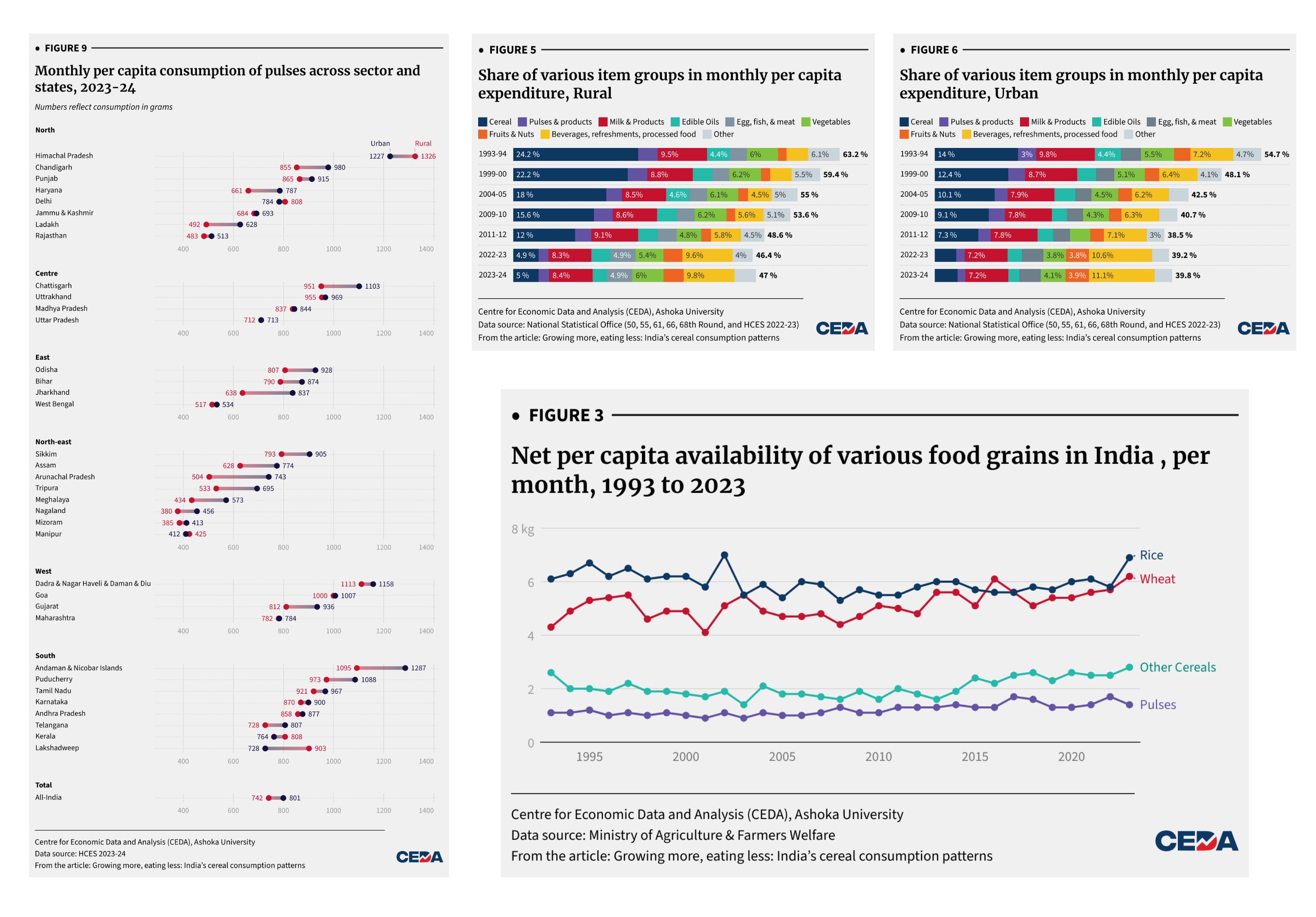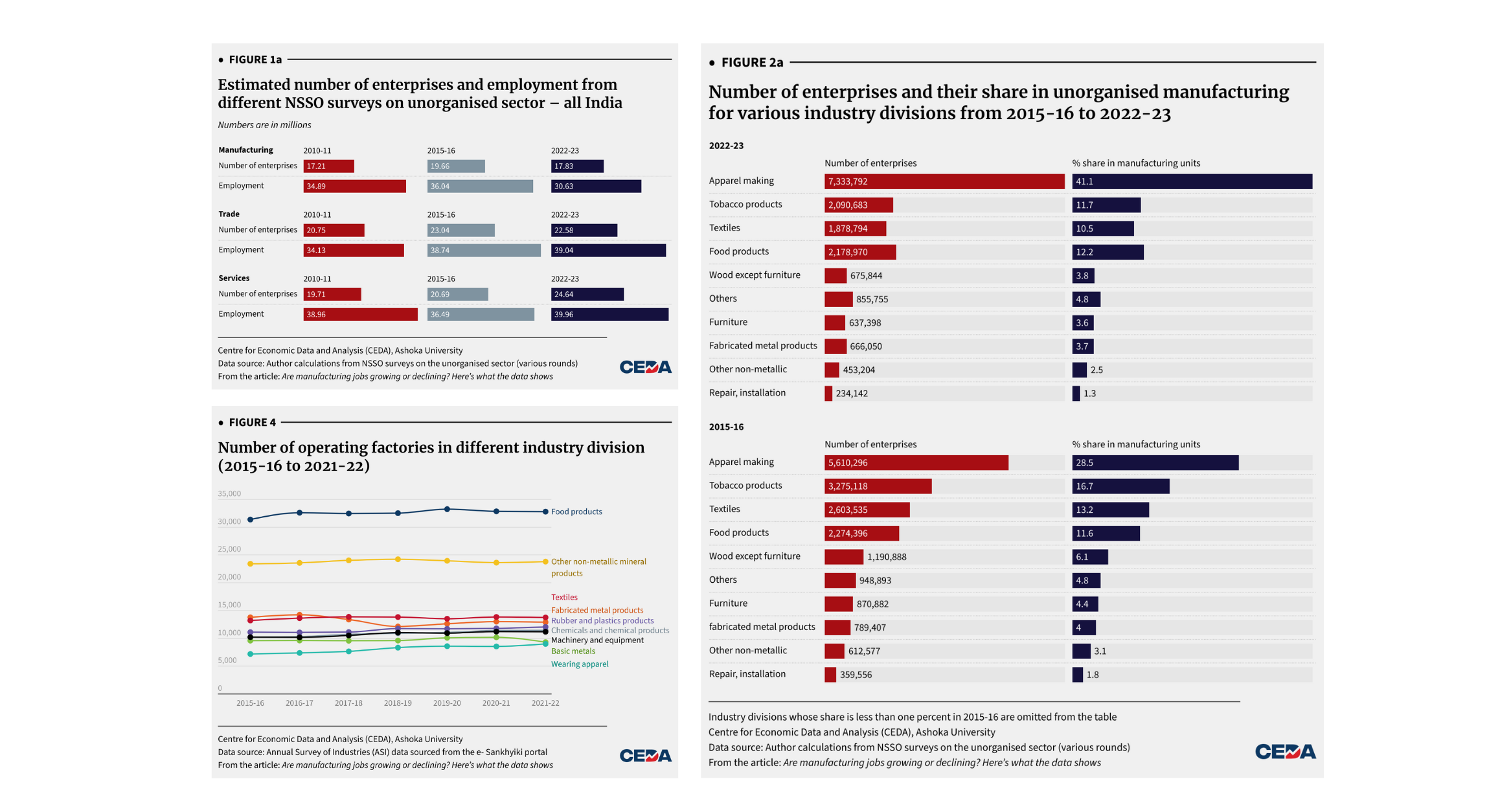Read our report ‘The Returnship Road‘ here.
Stat of the week
Explore more stats >
47 percent
The average share of food in the total monthly per capita expenditure incurred by a rural household in 2023-24
In comparison, among urban households, this share was 39.8 percent.
Latest Publications

Women and Work
The stories we followed in April 2025
Editor’s picks
Does the size of an organisation have any link to the share of women it employs?
Bigger firms tend to employ a larger proportion of women, possibly because they offer better non-wage benefits (such as maternity leave, childcare, transport, paid leaves and healthcare benefits) to workers.
How labour force participation rates in India vary across age groups
In 2022-23, 58.3 percent of Indians aged 15-59 years (the working age group) were part of its labour force. But this share was not uniformly distributed across the entire age group.
Support your work with data-driven insights
CEDA’s interactive data portal lets users generate and download visualizations of socio-economic and demographic indicators for India.
In the News
-
Returning from a career break? Employers may bet on you in a slow job market
The Mint reports on the release of ‘The Returnship Road’ by CEDA and Godrej DEI Lab.
-
What is a leaky pipeline and how can it help companies fix the gender gap?
India Today reports on the release of ‘The Returnship Road’ by CEDA and Godrej DEI Lab.
-
Mind the Gap 🖊️ by Namita Bhandare
Hindustan TImes’ Mind the Gap reports on the release of ‘The Returnship Road’ by CEDA and Godrej DEI Lab.
-
In cities, expenditure on cereals fell from 14% to 3.8% in 3 decades, while the share of expenditure on processed food increased from 7.2% to 11.1%
The Jagran cites a CEDA data narrative on cereal consumption in India.
-
India Is Growing More Cereals But Eating Less
The Wire republishes a CEDA data narrative.
-
The mystery of India’s female labour-force participation rate
The Economist quotes CEDA research in their article on India’s female labour-force participation rate.




















